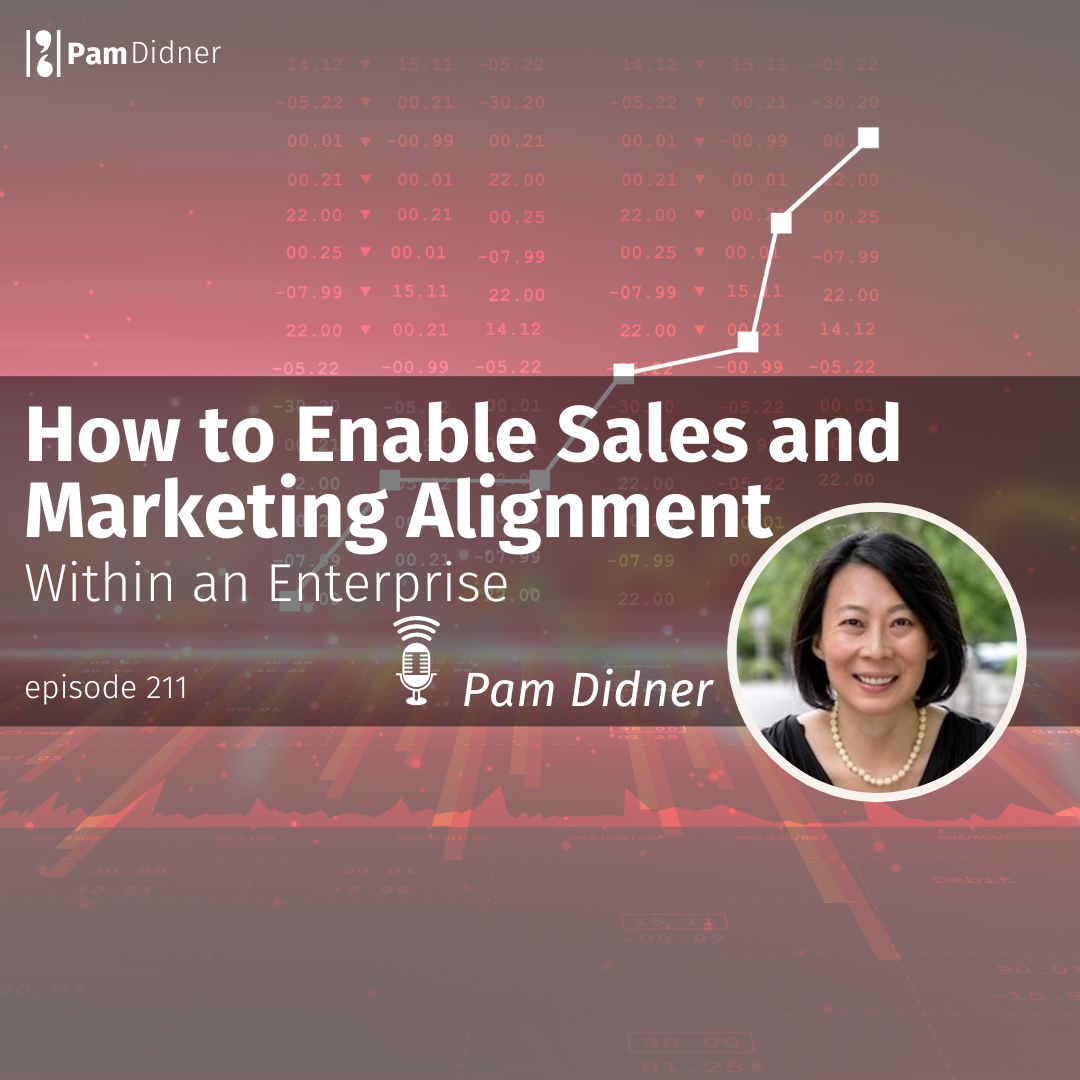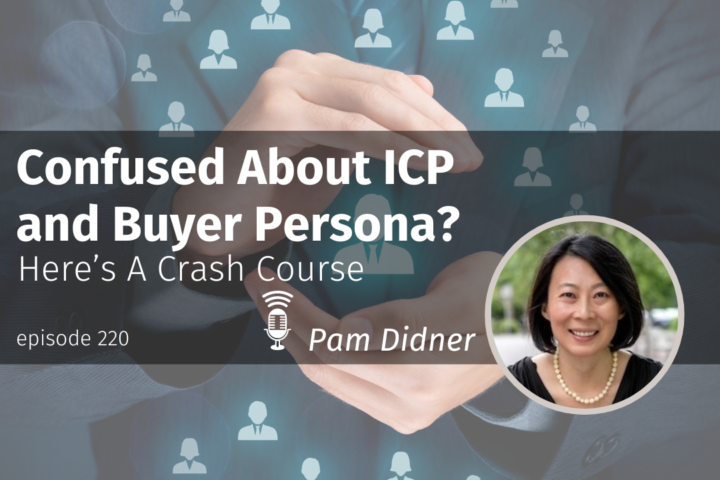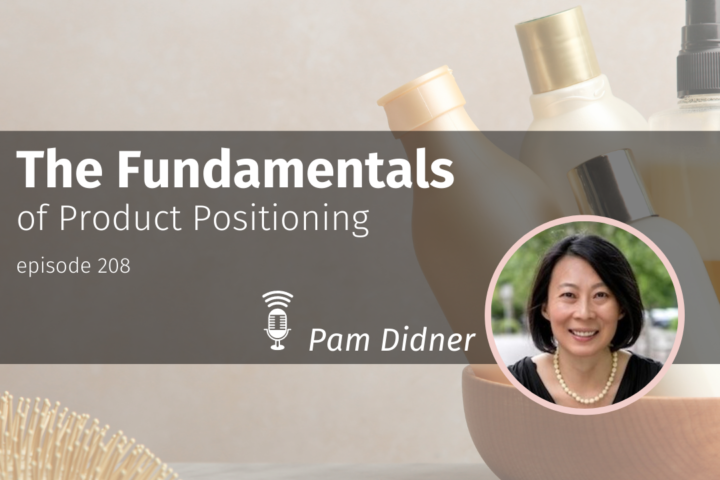
A big hello from Raleigh, North Carolina. In today’s episode of B2B Marketing & More, I’ll answer the following question: What’s the best way to integrate sales and marketing efforts within a large company?
After this episode, you will think about alignment differently, and you’ll have some actionable ideas as to how you should approach this challenge.
In this episode:
- What makes sales and marketing alignment difficult.
- How to resolve sales and marketing integration challenges in a large enterprise.
- Two approaches to aligning sales and marketing in an enterprise.
- How to establish clear and open communication.
Quotes from the episode:
“Sales and marketing integration is always hard. It’s even harder in a large enterprise because there are too many cooks in the kitchen.”
“Close and clear communication is essential, and be prepared to be nimble when you work with sales.“
—————
Enjoy the podcast? Subscribe to the show on your favorite podcast platform, leave a 5-star review and subscribe to Apple Podcasts.
If you prefer watching a video, I also have a YouTube Channel; check it out and subscribe.
If you want to chat, reach out to any social media channels or email me at hello@pamdidner.com. You can also join my Facebook community: Build Your Marketing Skills to Get Ahead. When you join, you get a free Starbucks on me. You can go to the Announcement tab and click on the barcode of the gift card.
To expand your knowledge about the integration of sales and marketing in a large enterprise, check out some of my previous podcast episodes, blog posts, and video.
Podcast episodes
How To Build Better Communication With Your Sales Team
Ask the Experts: Proven Tips for Sales and Marketing Alignment
Where Marketers Can Better Help Sales Boost Revenue
Blog post
Two Ways To Integrate Sales and Marketing in an Enterprise
How The Best Sales Reps Set Themselves Apart From Competition
Video
Your Startup Needs Sales and Marketing Alignment
TRANSCRIPT
A big hello from Raleigh, North Carolina. Are you ready for the monthly solo episode? I hope you’ve had a great start to the week so far. Today’s question: What’s the best way to integrate sales and marketing efforts within a large company?
After this episode, you will think about alignment differently, and you’ll have some actionable ideas as to how you should approach this challenge.
Rather than answering the question of the best way to integrate sales and marketing in a large company?
I want to change the question to How To Facilitate Sales and Marketing Integration within a Large Enterprise.
Here is why:
Sales and marketing integration is always hard. It’s even harder in a large enterprise because there are too many cooks in the kitchen. Your job is to lead and/or facilitate among different players. The challenge of smaller companies is not about too many people. It’s about lacking budget and resources.
Everyone has some sales and marketing integration challenges. I want to make sure you know that you are not alone.
The challenges for big enterprises have to do with being a big sales force and a big marketing organization.
Like, Texas-big. Everything is super-sized. Many people are involved, and tools are not necessarily user-friendly. As a result, the decision-making process is slower. In addition, within a “big” marketing organization, roles and responsibilities, and processes are specific; we don’t want to step on our colleagues’ toes. But within the digital world, things can be blurry, and you are bound to step on someone’s toes regardless.
For example, I own email marketing, but another group owns my content. They tend to create generic content for multi-channel usage. I can tell them to create specific content for my email campaigns, or I want to provide specific feedback on what they need to change for my email marketing campaigns. As far as I can tell, I have several choices.
- I can tell them what I need. They will create it for me. Happy ending.
- I can tell them what I need. They won’t do it.
In the first case, you are not stepping on anyone’s toes. Content marketers take care of your needs.
In the 2nd case, If I choose to create or modify the content on my own. How should I communicate with them? How should this be stored in the content library? Can other people use these pieces now that content is available in the content library? If I do this once, can other groups do the same thing and start modifying the content as they see fit?
See how many questions come up when you step outside of your lane?
Another big challenge in a big enterprise is that it’s very hard to create templates to scale. Someone will tell you that your templates don’t work for them and that they need some custom templates, or they will spend money making their own. Then, suddenly, there is no integration between sales and marketing.
There is no easy solution when you work in a big enterprise.
You need to consider two approaches when it comes to the actual integration process: Top-down and bottom-up.
If you like the way I explain things, please subscribe and comment below. Love to hear from you.
Top-Down:
This is driven by top management. The VP of Sales and CMO get together and define 1-2 big initiatives that sales and marketing need to work towards together.
It can be ABM, data integration, marketing support, sales messaging, etc., but something comes from the top. I’ve discovered that a top-down approach is ideal for integrating sales and marketing. Because top dogs are aligned, we worker bees will follow in whatever direction they deem fit. A task force is set up, or a virtual team is identified, and things get moving. Many issues are brought up on the table to discuss as a team. Then, solutions will be discussed to address any thorny issues.
It doesn’t mean there is no drama. Plenty of drama. There will still be plenty of back-and-forths because not everyone will agree on one approach. My recommendation is to talk it through and determine the goals and objectives you want to accomplish. Whatever decisions you make need to serve the main purpose. Also, you need a final D- Decision Maker (D= Decision Maker). If the team is equally divided on two different suggestions, you need someone to break the tie.
Bottom-Up:
If you are working with the sales team directly or are about to work with them, there are times when the alignment is led or driven by you. You work directly with the sales team and determine what needs to be done for better integration. In this case, the biggest benefit is that the scope is smaller, and you have a lot more control over what to do and how to do it. It’s much more manageable.
The key to bottom-up is that you need sales buy-in. Get the team’s commitment first and help them see what they can get out of it. Take time to get buy-in and commitment up-front.
One of the challenges for bottom-up is that the sales team sometimes may change their minds after making a decision. This is especially common when sourcing a platform for the sales team. After a final decision is made, they want to add more features. Sales would be like, “What do you mean that we can’t add that feature?”
This is less of an issue in a top-down approach because a specific process is followed. In a bottom-up approach, you are working on it on your own or with a small team, you are not necessarily engaged with senior management, and sales may think it’s easier to make changes even after the decision is made.
Close and clear communication is essential, and be prepared to be nimble when you work with sales.
So, these are the two approaches I’d personally recommend, but let me know what you do to integrate sales and marketing within a big enterprise.
Subscribe to my podcast on your favorite listening platform. Love to hear from you! Take care, my friends.


